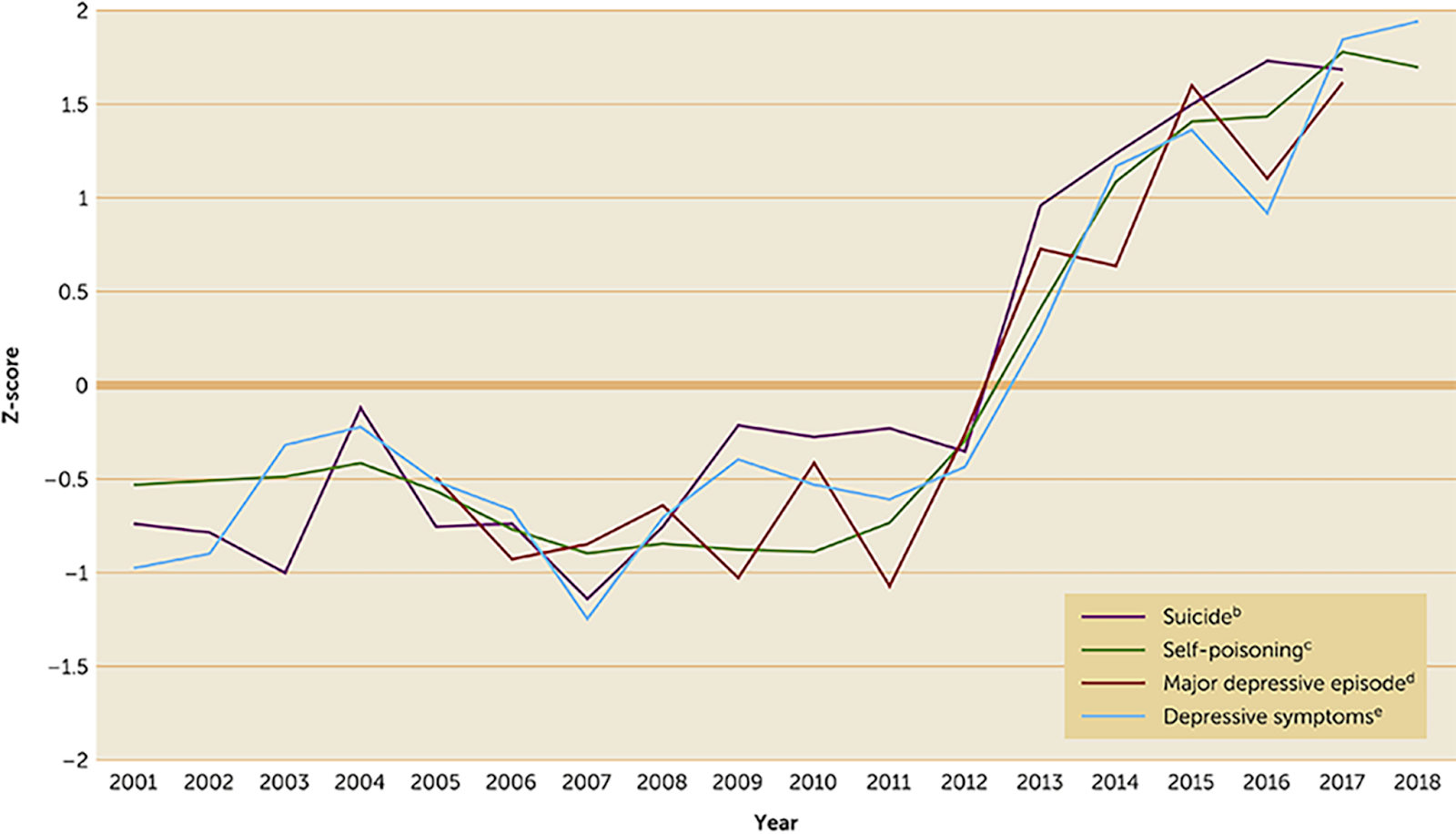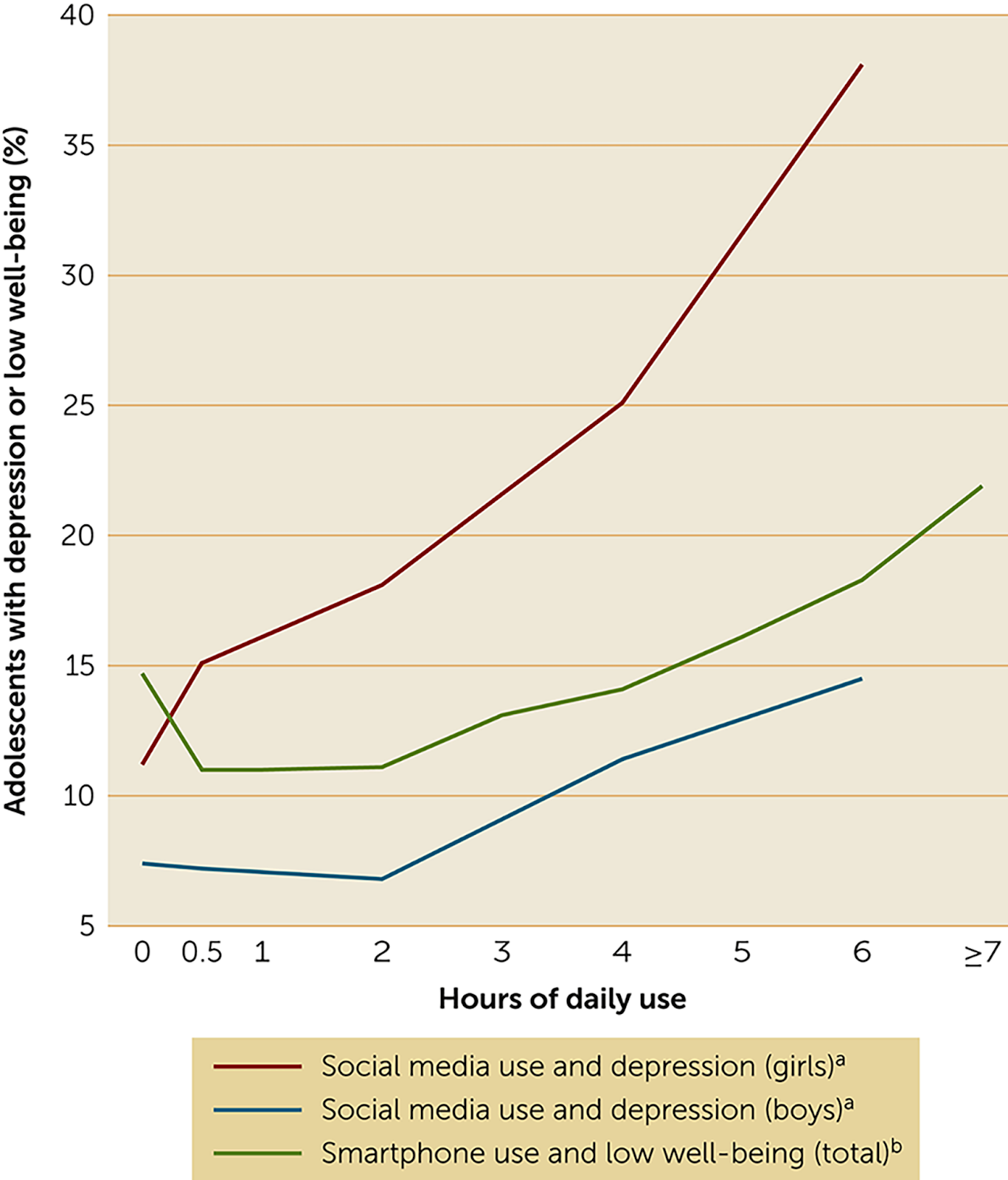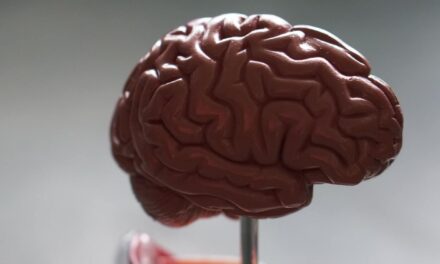Abstract
This paper explores how environmental and psychological factors influence stress and the effects of stress on mental health, brain development, self-esteem and coping strategies. We examine the impact of socioeconomic status, neighbourhood conditions and work environments on stress levels, particularly for those from lower socioeconomic backgrounds. We also discuss the role of social media in exacerbating stress through social comparison mechanisms. Additionally, the paper highlights the detrimental effects of toxic stress on brain development in children and adolescents, the implications of chronic stress on the immune system, and the importance of coping mechanisms like mindfulness and meditation in managing stress and promoting wellbeing. The findings assert the necessity of proactive methods for managing stress, with a focus on systemic interventions and successful coping strategies to reduce stress and enhance overall wellbeing and quality of life. These insights are important for guiding policies and practices aimed at mitigating stress and its detrimental impacts on various populations.
1. Introduction
According to the National Institute of Mental Health (NIMH, 2019), about 31% of adolescents in the United States have an anxiety disorder, which is often exacerbated by stress. Nearly 75% of adults report experiencing moderate to high levels of stress in the past month (APA, 2020). Stress is a pervasive aspect of modern life, affecting individuals across various demographics. There are many factors that affect stress levels. For example, the conditions around a person, such as socioeconomic status, work environment and social relationships, significantly influence stress levels. The roles of these external factors help explain why stress levels vary among individuals. Stress also has significant impacts on other aspects of life, such as self-esteem and body image. Chronic stress can induce negative self-perceptions, thus creating a vicious cycle that exacerbates stress. Stress also affects brain development, especially during critical growth periods, such as adolescence. Prolonged exposure to stress hormones can impair cognitive functions, such as memory and emotional regulation. This highlights the need for early intervention. Finally, effective coping methods for stress, such as mindfulness, physical activity and social support, are essential for maintaining mental health. Exploring these strategies offers practical ways to help individuals manage stress. This paper aims to provide a comprehensive overview of stress, from its environmental triggers to its psychological and neurological effects, and the strategies available for managing it.
2. How the Conditions around a Person affects Stress Levels
It is essential to understand how environmental factors affect stress levels. Stress is the human response to challenging or threatening situations and can vary significantly in intensity and frequency based on one’s circumstances. Socioeconomic status, neighbourhood conditions and work environment play critical roles in shaping an individual’s stress levels. Research indicates that individuals from lower socioeconomic backgrounds often face higher levels of stress due to financial instability and limited access to resources. Similarly, living in deprived neighbourhoods and experiencing poor working conditions can worsen stress and lead to adverse health outcomes. By examining these specific factors, we can better understand the complex relationship between the environment and stress, and develop effective strategies to mitigate stress and improve mental health outcomes.
2.1 Socioeconomic Status-related Stress
Socioeconomic status (SES) has a significant impact on stress levels. For instance, a study by Franziska Reiss found that children and adolescents from low SES families faced more frequent and intense stressful living situations, which linked to higher rates of mental health problems (Reiss, 2019). Factors such as minimal parental education and household income were significant contributors to increased stress levels in these populations.
2.2 Perceived Stress and Health-Risk Behaviour in Deprived Neighbourhoods
Living in deprived neighbourhoods can elevate perceived stress and negatively impact health behaviours. Research from BMC Public Health highlights that residents in these areas often report higher levels of stress, which correlate with poor health habits such as inadequate diet, smoking and physical inactivity (Holst Agren, 2018). The study suggests that the chronic stress associated with economic deprivation and strained living conditions can lead to adverse health outcomes, demonstrating the critical connection between one’s living environment and stress levels. The link between stress and health-risk behaviours in deprived neighbourhoods is well-documented. Residents of these areas often partake in behaviours such as smoking, excessive alcohol consumption and physical inactivity, which are linked to elevated stress levels. The same study from BMC Public Health (Holst Agren, 2018) found that these behaviours co-occur with stress, thus depicting the complex and bidirectional relationships between stress and poor health habits. This highlights the need for targeted interventions to reduce stress and promote healthier lifestyles in these communities. These interventions, if implemented effectively, have the potential to bring about positive change in these communities.
2.3 Work Stress
The workplace is another significant source of stress, particularly for individuals in lower socioeconomic positions. According to a report by the American Psychological Association, job strain, hazardous working conditions and economic instability exacerbate stress, especially among lower SES groups. The report emphasises that socioeconomic disparities in job quality and security contribute to elevated stress levels. This highlights the need for systemic changes to address these inequities. Improving working conditions and providing better support for lower SES workers are essential to reducing stress and improving mental health outcomes (Holst Agren, 2018).
2.4 Socioeconomic Disparities in Mental Health
A solid understanding of the correlations between socioeconomic status and stress is essential for addressing disparities in mental health prevalence across social groups. In the aforementioned study by Reiss (2019), strong evidence supports the idea that low SES is associated with more frequent exposure to stressful life events, which in turn leads to higher rates of stress and mental health problems.
These insights highlight the strong impact of socioeconomic factors and environmental conditions on stress. Addressing these issues through policy changes and community support can help minimise stress and promote wellbeing.
3. The Effects of Stress on Self-Esteem and Body Image
The rise of social media has revolutionised how individuals communicate, share and perceive their lives and the lives of others. While these platforms offer numerous benefits, such as connecting with loved ones and accessing information, they also harbour significant psychological risks. For example, stress induced by social media use has emerged as a critical concern, particularly regarding its impact on self-esteem. Social media not only exacerbates feelings of inadequacy and anxiety, but also contributes to the development of more severe mental health issues, including self-harm and suicide. This section of the research paper explores the intricate relationship between social media, self-esteem and the resultant stress, pointing out the dangerous trajectory that can lead to self-destructive behaviours. By examining studies and psychological theories, we aim to shed light on the underlying mechanisms that transform social media stress into a catalyst for severe mental health problems.
3.1 Pursuit of Reaching Unrealistic Standards
One of the primary ways social media impacts self-esteem is through social comparison. People often compare themselves to the idealised versions of others who present themselves online, leading to feelings of inadequacy and lowered self-esteem. Festinger (1954) proposed the theory of social comparison, which states that individuals determine their own social and personal worth and value based on how they stack up against others. This comparison comes from social media platforms where users frequently post curated content that showcases the best aspects of their lives. They only present what they choose to present. The audience sees only the cherry-picked parts, and belives this to be reflective of their everyday lives. A study by Vogel et al. (2014) found that increased Facebook use was associated with greater social comparison, which in turn predicted lower self-esteem and higher levels of depression.
Social media platforms, particularly those focused on visual content like Instagram and Snapchat, play a significant role in shaping body image. Exposure to images of idealised body types can lead to body dissatisfaction and negative self-perception. Tiggemann and Slater (2014) conducted a study on the impact of Instagram on body image and found that the platform’s focus on appearance and physical attractiveness contributed to increased body dissatisfaction among young women. This dissatisfaction can result in stress and anxiety as individuals strive to meet unrealistic beauty standards. The pursuit and hunger for likes, acceptance and validation on social media can also contribute to stress and self-esteem issues. The dopamine-driven feedback loop created by receiving likes and positive comments can make individuals reliant on social media validation in determining their self-worth (Ali & Amin, 2018).
3.2 How Does This Affect One’s Psychological Wellbeing?
This pursuit of unrealistic standards leaves people in a vicious cycle where they are hungry for more and more. This hunger is never satisfied. No matter how many likes or followers you get, you will always want more. Andreassen et al. (2017) emphasised that this dependency can lead to anxiety and stress, especially when the expected validation is not earned.
The fear of missing out, abbreviated as FOMO, is another psychological phenomenon linked to social media use that can negatively impact self-esteem and increase stress levels. FOMO refers to the anxiety that arises from the belief that others are having more rewarding experiences, which is perpetuated by seeing social media posts about events, gatherings and activities. Przybylski et al. (2013) found that individuals with higher levels of FOMO experienced lower life satisfaction and higher levels of stress, as they felt perpetually left out or not as accomplished as their peers.
Adolescents are particularly vulnerable to the effects of social media on self-esteem and self-image. During this developmental stage, individuals are forming their identity and are highly sensitive to peer feedback. A longitudinal study by Nesi and Prinstein (2015) found that increased social media use predicted increases in depressive symptoms among adolescents. This relationship was mediated by peer-related stressors such as cyberbullying and social comparison. The authors emphasised the need for interventions that address the unique challenges posed by social media during adolescence. According to the Centers for Disease Control and Prevention (CDC), hospital admissions for non-fatal self-harm among girls aged 15-19 in the US increased by 62% since 2009. Among girls aged 10-14, the increase was 189%. Additionally, suicide rates among girls aged 15-19 rose by 70%, while those among girls aged 10-14 surged by 151%. 2009 was also the year social media became available on mobile. Since these rates of self-harm and suicide, as previously stated skyrocketed alongside the rise of social media (as depicted in Figures 1 and 2), they point to social media playing a significant role in mental wellbeing.

Figure 1 shows how rates of suicide, self-harm and major depressive episodes skyrocketed, especially in 2012, which is the time when social media became available on mobile.

Figure 2 shows the correlation between the hours of daily use of social media and mental wellbeing.
4. The Effects of Stress on Brain Development
Stress, particularly when experienced over prolonged periods, can significantly alter brain development, especially in children and adolescents (Texas Children’s Hospital). Toxic stress, which arises from extended traumatic life events without the protection of a supportive adult, leads to profound changes in brain structure and function. According to the Texas Children’s Hospital, research has shown that this kind of stress can cause the fear centres in the brain, such as the limbic system, to increase significantly in size. This alteration can lead to symptoms similar to post-traumatic stress disorder (PTSD) in children. Moreover, toxic stress impairs the functioning of regions of the brain responsible for memory, learning and executive functioning, such as the prefrontal cortex and hippocampus. This results in an increased risk of learning or behavioural and cognitive problems (LaMotte, 2023).
4.1 Impact of Stress Due to COVID-19
The recent surge in stress levels among teenagers during the COVID-19 pandemic has highlighted the detrimental effects of chronic stress on brain development. A study revealed that pandemic-related stress could exacerbate pre-existing mental health issues and significantly alter brain structure in adolescents (Gotlib et al., 2023). For example, it was found that stress can cause the brain to develop more rapidly, which might sound beneficial but can actually lead to an imbalance in brain function and structure. These changes are particularly concerning as they can have long-lasting effects on cognitive and emotional development.
4.2 Cyberbullying
Cyberbullying is another modern stressor that has severe implications for brain development. Prolonged exposure to online harassment can result in toxic stress, altering the brain’s developing structures. Similar to other forms of chronic stress, stress resulting from cyberbullying can increase the size of the limbic system, while decreasing the size and impairing the functioning of regions like the prefrontal cortex and hippocampus (Texas Children’s Hospital). This imbalance can lead to difficulties in memory, learning and decision-making, further compounding the victim’s psychological distress.
5. The Effects of Stress on the Immune System?
Stress does not only affect the brain’s physical structure but can also have genetic implications. Studies have shown that prolonged stress can lead to alterations in DNA, which can be passed down to future generations (Bowers & Yehuda, 2015). This genetic change might predispose offspring to a heightened stress response and related psychological issues. This intergenerational transmission of stress effects underscores the importance of addressing and mitigating chronic stress in both current and future generations.
Stress has a significant impact on the immune system, compromising its ability to function effectively and leaving individuals more susceptible to illnesses (Slavich, 2016). When the body experiences stress, it triggers the release of stress hormones such as cortisol and adrenaline. These hormones are part of the body’s ‘fight-or-flight’ response, which is beneficial in short-term and acute stressful situations. However, when stress becomes chronic, prolonged exposure to these hormones can have detrimental effects on the immune system.
Chronic stress leads to continuous activation of the hypothalamic-pituitary-adrenal (HPA) axis, resulting in elevated levels of cortisol. While cortisol is necessary for regulating various body functions, its persistent presence at high levels can suppress the immune system. This suppression occurs because cortisol inhibits the production of certain cytokines, which are crucial for the immune response. Cytokines are proteins that help to regulate the immune system’s response to infections and inflammation. When their production is reduced, the body’s ability to fight off infections diminishes, making it more vulnerable to pathogens (Slavich, 2016).
Moreover, chronic stress can decrease the production and effectiveness of white blood cells, which are essential components of the immune system (Slavich, 2016). White blood cells, including lymphocytes and phagocytes, play a crucial role in identifying and attacking foreign invaders such as bacteria and viruses. Reduced numbers and functionality of these cells can lead to an increased risk of infections and slower recovery times following infection. Research has shown that individuals under chronic stress have slower wound healing rates (Slavich, 2016). This is because stress impairs the body’s inflammatory response, which is necessary for wound healing, and reduces the production of pro-inflammatory cytokines at the wound site. Consequently, stressed individuals may experience prolonged recovery times from injuries and surgeries, increasing the risk of complications and infections. Psychological stress, such as those seen in anxiety and depression, can also weaken the immune system. Studies have demonstrated that individuals experiencing high levels of psychological stress have lower levels of antibodies and are less responsive to vaccines (Slavich, 2016). This decreased immune response can make it harder for the body to defend itself against new infections and respond effectively to immunisations.
5.1 Long-Term Issues
The long-term health consequences of a weakened immune system due to chronic stress are significant. Individuals with compromised immune systems are more prone to frequent infections, prolonged illnesses and chronic diseases (Slopen, 2014). The interplay between stress and the immune system highlights the importance of stress management strategies to maintain overall health and wellbeing. Techniques such as mindfulness, exercise, adequate sleep and social support can help mitigate the adverse effects of stress on the immune system.
Overall, the effects of chronic stress on brain development are profound and multifaceted. From altering brain structures to impairing cognitive functions and even changing genetic material, the repercussions of prolonged stress, whether from social media, pandemic-related anxieties or other stressors, are severe. Addressing these issues requires a multifaceted approach that includes providing supportive environments, reducing stressors and offering mental health support to mitigate the long-term consequences of toxic stress on brain development.
6. Coping Methods for Stress
Coping strategies for stress can significantly affect psychological wellbeing as well as physiological reactions, such as cortisol levels. Two of the best ways to reduce stress are meditation and mindfulness. Rogerson et al. (2023) conducted a systematic review and meta-analysis and found a medium-sized positive effect that mindfulness and meditation noticeably lowered cortisol levels. The results demonstrated a medium-positive effect size of 0.345 based on an analysis of 58 studies, involving a total of 3,508 participants. By encouraging relaxation and enhancing emotional control, these treatments help to lower stress markers by reducing the body’s stress response.
Other coping mechanisms can also be beneficial in helping people control stress and the related cortisol responses. As Janson and Rohleder (2017) have shown, distraction has been connected to improved cortisol recovery following acute psychological stress. This coping strategy enables people to rapidly turn their focus away from pressures, enabling a faster return to baseline cortisol levels and increasing general stress resilience.
Additionally, studies by Abercrombie et al. (2023) revealed that smaller increases in negative affect, indicating mood-protective effects, are linked to higher cortisol reactions to acute stress. Specifically, this research demonstrated that a 1 standard deviation increase in cortisol was associated with a 0.2 standard deviation decrease in negative affect. This implies that increased cortisol levels under stress can help to balance emotional reactions, lessening the total influence of stress on mental health. Moreover, as Ishika (2022) discovered, transcendental meditation and other stress-reducing strategies have been statistically linked to declining cortisol levels by approximately 23%. This highlights the need for organised relaxation methods in decreasing stress. These results accentuate the need to use sensible coping mechanisms to control stress and preserve normal cortisol levels, thus enhancing both mental and physical condition.
7. Conclusion
In conclusion, this paper articulates the complex nature of stress and its serious influence on people’s mental and physical conditions within different demographics. Stress levels are determined mainly by environmental elements, including socioeconomic level, neighbourhood conditions and workplace surroundings. Furthermore, the need for early and continuous intervention plans is underlined by the negative consequences of stress on self-esteem, which is especially influenced by social media, and on brain development. The connection between stress and immune system activity further asserts the need for controlling persistent stress in order to maintain general health. Reducing stress and advancing mental health depends on strong coping strategies, including mindfulness, meditation and encouraging social networks. Stressing the need for systemic changes and personal coping mechanisms to build resilience and enhance health outcomes, this paper provides a thorough overview of stress, from its environmental triggers to its psychological and neurological effects.
Bibliography
Abercrombie, H., Barnes, A., Nord, E., Finley, A., Estelle H., Grupe D., Rosenkranz, M., Davidscon R. & Schaefer S. (2023). Inverse association between stress induced cortisol elevations and negative emotional reactivity to stress in humans. Stress. https://doi.org/10.1080//10253890.2023.2174780
American Psychological Association. Work, Stress and Health & Socioeconomic Status. https://www.apa.org/pi/ses/resources/publications/work-stress-health
Andreassen, C. S., Pallesen, S., & Griffiths, M. D. (2017). The relationship between addictive use of social media, narcissism, and self-esteem: Findings from a large national survey. *Addictive Behaviors, 64*, 287-293.
BMC Public Health. (2018). Associations between perceived stress, socioeconomic status, and health-risk behaviour in deprived neighbourhoods in Denmark: a cross-sectional study – BMC Public Health. https://bmcpublichealth.biomedcentral.com/articles/10.1186/s12889-018-5170-x
Binu, I. M., & Binu, I. M. (2022). Investigating the impact of self care stress reduction strategies on cortisol levels. Global Journal of Medical and Clinical Clinical Image, 9(4), 057–062. https://www.clinsurggroup.us/articles/GJMCCR-9-261.php
Bowers, M. (2015). Intergenerational transmission of stress in humans. Neuropsychopharmacology : Official Publication of the American College of Neuropsychopharmacology. https://pubmed.ncbi.nlm.nih.gov/26279078/
Festinger, L. (1954). A theory of social comparison processes. Human Relations, 7(2), 117-140.
Gotlib, I. H., Miller, J., Borchers, L., Coury, S., Costello, L., Garcia, J. & Ho, T. (2023).. Effects of the COVID-19 pandemic on mental health and brain maturation in adolescents: implications for analysing longitudinal data. Biological Psychiatry: Global Open Science 3(4). https://www.bpsgos.org/article/S2667-1743(22)00142-2/fulltext
Harris, P. (2015). The importance of good referencing in academic work. Academic Press.
Janson, J., & Rohleder, N. (2017). Distraction coping predicts better cortisol recovery after acute psychosocial stress. Biological Psychology, 128, 117–124. https://doi.org/10.1016/j.biopsycho.2017.07.014
LaMotte, S. (2023). High stress levels may lower cognition, study shows. CNN. https://www.cnn.com/2023/03/07/health/high-stress-lower-cognition-study-wellness/index.html
LaMotte, S. (2022). Pandemic stress physically aged teens’ brains, study says. CNN. https://www.cnn.com/2022/12/02/health/pandemic-teen-brains-stress-wellness/index.html
Lupien, S. J., McEwen, B. S., Gunnar, M. R., & Heim, C. (2009). Effects of stress throughout the lifespan of the brain, behaviour and cognition. Nature Reviews Neuroscience, 10(6), 434-445. doi:10.1038/nrn2639
Nesi, J., & Prinstein, M. J. (2015). Using social media for social comparison and feedback-seeking: Gender and popularity moderate associations with depressive symptoms. Developmental Psychology, 51(4), 1185-1196.
Przybylski, A. K., Murayama, K., DeHaan, C. R., & Gladwell, V. (2013). Motivational, emotional, and behavioural correlates of fear of missing out. Computers in Human Behavior, 29(4), 1841-1848.
Rogerson, O., Wilding, S., Prudenzi, A., & O’Connor, D. B. (2024). Effectiveness of stress management interventions to change cortisol levels: a systematic review and meta-analysis. Psychoneuroendocrinology, 159, 106415–106415. https://doi.org/10.1016/j.psyneuen.2023.106415
Shonkoff, J. P., & Garner, A. S. (2012). The lifelong effects of early childhood adversity and toxic stress. Pediatrics, 129(1), e232-e246. doi:10.1542/peds.2011-2663
Slavich, G. M. (2016). Life stress and health: A review of conceptual issues and recent findings. Frontiers in Psychiatry, 7. https://pubmed.ncbi.nlm.nih.gov/27761055/
Slopen, N., Koenen, K. C., & Kubzansky, L. D. (2014). Cumulative adversity in childhood and emergent risk factors for long-term health. Journal of Clinical Epidemiology, 67(3), 317-326. doi:10.1016/j.jclinepi.2013.09.009
Reiss, F., Meyrose, A., Otto, C., Lampert, T., Klasen, F., & Ravens-Sieberer, U. (2019). Socioeconomic status, stressful life situations and mental health problems in chidlren and adolescents: results of the German BELLA cohort-study. PLoS One https://journals.plos.org/plosone/article?id=10.1371%2Fjournal.pone.0213700
American Psychological Association. Stress and Health Disparities Report. https://www.apa.org/pi/health-equity/resources/stress-report
Texas Children’s Hospital.The impact of toxic stress on children. https://www.texaschildrens.org/content/wellness/impact-toxic-stress-children
Tiggemann, M., & Slater, A. (2014). NetGirls: The Internet, Facebook, and body image concern in adolescent girls. International Journal of Eating Disorders, 47(6), 630-643.
Twenge, J. M. (2020). Increases in depression, self‐harm, and suicide among U.S. adolescents after 2012 and links to technology use: possible mechanisms. Psychiatric Research and Clinical Practice, 2(1), 19–25. https://doi.org/10.1176/appi.prcp.20190015
Vogel, E. A., Rose, J. P., Roberts, L. R., & Eckles, K. (2014). Social comparison, social media, and self-esteem. Psychology of Popular Media Culture, 3(4), 206-222.




